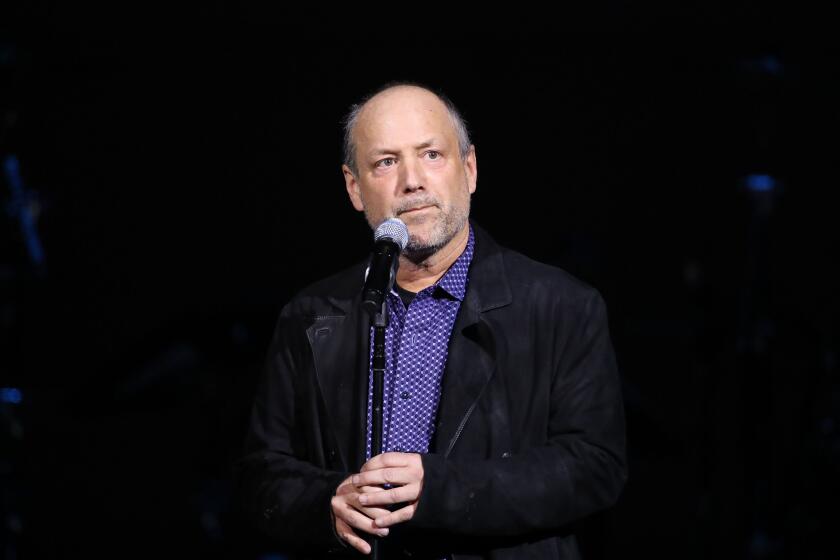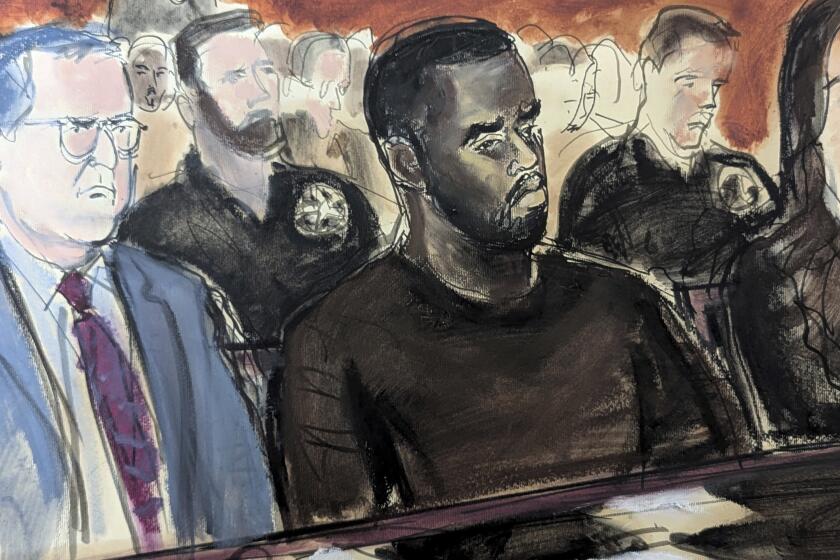Bernard Labadie’s DIY path to becoming a conductor
- Share via
Top conductors make their way to the podium in various ways. Bernard Labadie got there almost accidentally. The 48-year-old French Canadian — who is scheduled to lead the Los Angeles Philharmonic in an all-Mozart program at Disney Hall this weekend — describes himself as having been a “very ordinary” recorder player who changed his focus to singing. But that didn’t exactly work out, either.
“I was a bad singer, a very lazy one,” he said recently by telephone from Quebec City, where he’s lived all his life. “Then it became clear I wanted to be a conductor.” The revelation came in 1983, when Labadie was in college and he and a friend decided to mount Henry Purcell’s opera “Dido and Aeneas.” Despite having no experience in the field, Labadie took it upon himself to form an orchestra. “It was like being struck by lightning,” he recalled. “I knew it was what I wanted to do for a living.”
Members of the faculty were so impressed that they asked Labadie to lead Monteverdi’s “Coronation of Poppea” the following year. “It was a very ambitious project for someone who had no idea of what he was doing,” he acknowledged. “But after that experience, there was no turning back.”
Indeed, Labadie was so enamored of leading singers and instrumentalists in Baroque music that he decided to form his own ensembles right after graduation, when he could no longer rely on the university’s resources. Founded in the mid-1980s, Les Violons du Roy and La Chapelle de Québec are today regarded as elite ensembles, often performing — and recording — with internationally celebrated soloists. “It’s been a long and sometime bumpy process,” Labadie said. “It started as friends and then turned professional, with all the growing pains one can imagine.”
His success in Canada — especially in Handel’s “Messiah” — generated interest south of the border. “It sort of triggered curiosity in America,” he said, “because so many orchestras do it.” The Minnesota Orchestra was the first to take him on as a guest conductor, in 1999. But plenty of others soon followed, including the major orchestras of New York, Chicago, Boston, San Francisco, Cleveland, Houston and Los Angeles — where he made his local debut at the Hollywood Bowl in 2003.
“As a guest conductor, I’m a rather late bloomer,” Labadie acknowledged. “Between the ages of 21 and 37, I learned the craft with my orchestra and in the pit at Quebec Opera and, briefly, with Montreal Opera. ‘To learn on the pile,’ they say in French, and that’s what I did.”
Countertenor Andreas Scholl, whose work with Labadie includes four performances of “Messiah” at Disney Hall in 2004, describes their collaborations as “effortless music-making,” adding, “He does not need to become bossy, because there’s a natural authority, and musicians sense it. Everyone knows what his vision is.”
American orchestras find him an appealing interpreter of pre-Romantic repertory because of techniques he perfected back home, the conductor suggests. “I’m kind of bilingual,” he said, explaining that Les Violons du Roy use modern string instruments but period bows to produce a clear, transparent sound that is all their own. “I’m at ease with period instruments, and I’m at ease with modern orchestras, who may have little familiarity with period practice.”
According to L.A. Philharmonic concertmaster Martin Chalifour, who has performed for Labadie as an orchestra member and as a soloist, “He offers more information, more teaching, than other conductors, but not in a condescending way. It’s meant to be for clarity — that’s why he does it.”
Process is key for Labadie. “You have to be able to explain very clearly how to make a sound or articulation work,” he said. “I take great pride and joy in the journey, as much as in the destination. To introduce to a great orchestra a language that is unfamiliar to them is an incredible challenge, and a nerve-racking one. But I love when that transformation in the sound happens. Of course, you cannot turn these groups into a Baroque band in three days. So the idea is to get to the spirit of it, rather than the letter.”
The all-Mozart program at Disney Hall — which includes ballet music from the opera “Idomeneo,” the Piano Concerto No. 27 (with soloist Benedetto Lupo) and the “Jupiter” Symphony — marks the third time this season that the philharmonic has devoted concerts to a single composer. It’s a scheme Labadie favors.
“I like one composer, one language, one universe,” he said. “Rehearsal time is so limited, you want to make the most of it. And it’s easier to make the most if you dig down in a concentrated way. If you’re doing Mozart, Brahms, Tchaikovsky, you’re dealing with three completely different worlds. It’s difficult to find the right sound.”
That notion is central to Labadie’s conception of a conductor’s role, which he characterizes as something almost alchemical. “Our job is to make the energy circulate,” he said, “to make it go from dots on paper to the musicians, who then carry the result to the audience. The conductor has not made a single sound by himself. We’re just a vehicle — a way of transmitting the energy.”
More to Read
The biggest entertainment stories
Get our big stories about Hollywood, film, television, music, arts, culture and more right in your inbox as soon as they publish.
You may occasionally receive promotional content from the Los Angeles Times.










